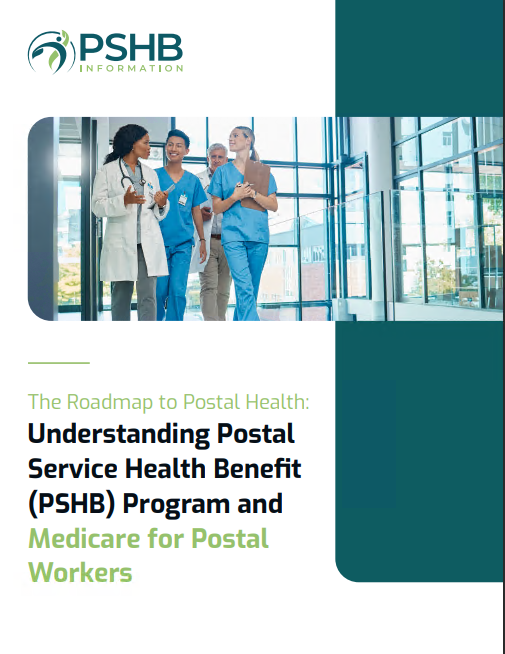Key Takeaways:
-
Deciding on the right Postal Service Health Benefits (PSHB) plan during Open Season directly impacts your family’s health coverage and financial stability for 2025.
-
Understanding plan details and aligning them with your needs ensures you maximize benefits while minimizing costs.
Why Open Season Matters More Than Ever
The transition from the Federal Employees Health Benefits (FEHB) program to the Postal Service Health Benefits (PSHB) program in 2025 marks a significant change for postal workers and their families. Open Season is your annual opportunity to evaluate and make changes to your health coverage. Missing this chance means you’re locked into your current plan unless you experience a Qualifying Life Event (QLE), such as marriage, divorce, or the birth of a child.
This isn’t just a routine process; it’s your chance to ensure you’re making informed choices about your family’s health and financial security. With PSHB, some critical changes could directly affect your healthcare and costs, making this Open Season pivotal.
What’s Different with PSHB?
Exclusive to Postal Employees and Retirees
PSHB plans are specifically tailored for Postal Service employees, retirees, and their eligible family members. This exclusive program replaces FEHB coverage but retains many similarities, such as comprehensive plan options and government contributions to premiums. However, the eligibility requirements and plan structures now align more closely with the needs of postal workers and retirees.
Medicare Integration
For Medicare-eligible retirees and their family members, enrolling in Medicare Part B is now a requirement to maintain PSHB coverage. This integration aims to reduce overall costs for both enrollees and the system, but it requires careful planning. Understanding how PSHB coordinates with Medicare helps you make the most of your benefits.
Focus on Cost Savings
PSHB offers cost-saving opportunities, including premium reimbursements for Medicare Part B enrollees and reduced out-of-pocket expenses for prescription drugs through the Medicare Part D Employer Group Waiver Plan (EGWP). However, these benefits vary by plan, emphasizing the importance of comparing your options.
Navigating Open Season Successfully
Start with Your Needs
Before diving into plan comparisons, take a moment to evaluate your health needs and those of your family. Consider the following:
-
Current health conditions: Do you or your family members require regular doctor visits, specialist care, or ongoing treatments?
-
Medications: Are your prescriptions covered, and what are the costs under different plans?
-
Budget: What premium and out-of-pocket costs are manageable for you?
Compare Plans
Once you understand your needs, compare the available PSHB plans. Focus on:
-
Coverage: Ensure the plan covers essential services like primary care, specialists, hospital stays, and preventive care.
-
Networks: Confirm your preferred doctors and healthcare facilities are in-network to avoid higher costs.
-
Costs: Review premiums, deductibles, copayments, and coinsurance to estimate your total annual expenses.
-
Prescription Drug Coverage: Check if your medications are included in the formulary and at what tier.
Understand the Annual Notice of Change (ANOC)
The Annual Notice of Change (ANOC) provides a summary of changes to your current plan. Pay close attention to modifications in premiums, coverage, and out-of-pocket limits to ensure your plan still meets your needs.
Making the Most of Medicare Integration
If you’re Medicare-eligible, PSHB’s integration with Medicare Part B and Part D offers significant advantages. Here’s what you need to know:
-
Part B Enrollment: Enrolling in Medicare Part B is mandatory for most retirees to maintain PSHB coverage. The standard monthly premium for Part B is $185 in 2025, and deductibles have increased to $257. Plan ahead to incorporate these costs into your budget.
-
Part D Prescription Drug Coverage: PSHB plans automatically include Part D coverage through the EGWP. This eliminates the “donut hole” and caps out-of-pocket prescription costs at $2,000 annually.
-
Premium Reimbursements: Many PSHB plans offer partial reimbursements for Part B premiums, offsetting some of the added costs.
Key Deadlines and Timelines
Open Season Dates
The Open Season for PSHB ran from November 11 to December 13, 2024. Changes made during this period take effect starting January 1, 2025. If you missed this window, you can only make changes due to a QLE.
Qualifying Life Events (QLEs)
Certain life events allow you to adjust your coverage outside of Open Season. Examples include:
-
Marriage or divorce
-
Birth or adoption of a child
-
Loss of other health coverage
For any changes, you must act within 60 days of the QLE.
Tips for Choosing the Right Plan
Prioritize Total Costs Over Premiums
While lower premiums may seem appealing, they’re only part of the equation. Consider how deductibles, copayments, and coinsurance add up based on your expected healthcare usage. A plan with a higher premium but lower out-of-pocket costs may save you money in the long run.
Check Network Accessibility
Ensure the plan’s network includes your preferred doctors, specialists, and hospitals. Out-of-network care can lead to significantly higher expenses.
Leverage Decision-Support Tools
Many resources are available to help you compare plans, including the PSHB website and plan brochures. Use these tools to analyze your options side by side.
Common Pitfalls to Avoid
-
Ignoring ANOC Updates: Overlooking changes to your current plan could leave you unprepared for increased costs or reduced benefits.
-
Delaying Medicare Enrollment: Failing to enroll in Medicare Part B on time can result in penalties and loss of PSHB coverage.
-
Underestimating Prescription Costs: Ensure your medications are covered at a reasonable cost under your selected plan.
How PSHB Impacts Retirees
For retirees, the shift to PSHB introduces new requirements and opportunities. Medicare integration is central to this transition, offering a combination of benefits and challenges. Retirees should:
-
Verify their eligibility for premium reimbursements.
-
Plan for the additional cost of Medicare Part B premiums.
-
Review how their chosen plan coordinates with Medicare to minimize out-of-pocket expenses.
Preparing for Future Open Seasons
Even if you’re satisfied with your current plan, it’s wise to review your options annually. Changes in your health, family situation, or plan offerings could make a different option more suitable. Staying informed ensures you continue to make the best decisions for your needs.
Staying Updated
Keep an eye out for PSHB communications, including:
-
Plan Brochures: Detailed descriptions of benefits and costs.
-
Annual Notices: Updates on changes to current plans.
-
Educational Sessions: Webinars or local meetings that explain PSHB options.
Final Thoughts on Open Season
Making the right choice during Open Season ensures you and your family have access to the care you need while managing costs effectively. Take the time to evaluate your options, understand the changes, and align your plan with your health and financial goals. With PSHB’s tailored offerings, there’s a solution that fits every postal worker’s needs.








